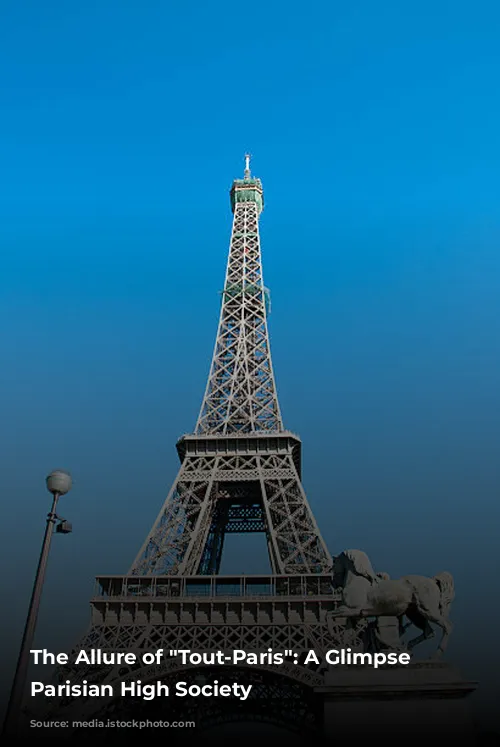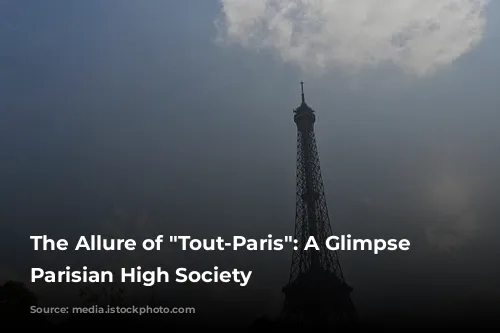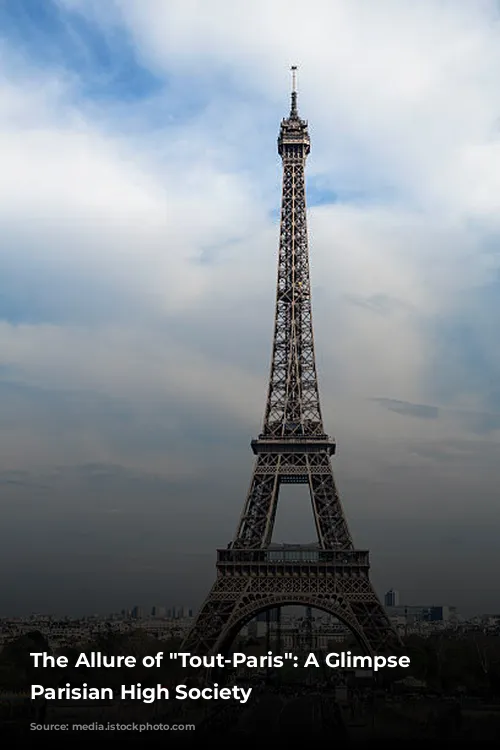The term “Tout-Paris,” meaning “All-Paris,” whispers of an exclusive world where style and wealth intertwine. This French expression captures the essence of Paris’s elite, a group that sets trends in fashion, culture, and lifestyle. It’s the Parisian equivalent of the global jet set, a group that enjoys a certain prestige and influence.
From Aristocrats to Modern-Day Celebrities
“Tout-Paris” has a rich history, its roots firmly planted in the 17th century. During this era, the expression referred to the influential figures of Parisian high society. The renowned writer Nicolas Boileau used the term in his Satires, highlighting the power these individuals held to sway public opinion. Their support could make or break a play, influencing the city’s cultural landscape.
The 19th century saw a transformation in the makeup of “Tout-Paris.” The French Revolution and the rise of Napoleon ushered in a new era where the elite was no longer solely comprised of aristocrats. A new social class emerged, composed of bankers, writers, and artists, who held sway over the city’s cultural scene.
The “Bon Goût” of “Tout-Paris”
This new “Tout-Paris” was characterized by a sophisticated taste, known as bon goût. They frequented fashionable neighborhoods, attended grand theatrical performances, and graced embassy receptions with their presence. Their hobbies, like horse racing and seaside vacations, became the trendsetters for Parisian society.
This group’s activities were documented extensively in the burgeoning mass media. A 1895 article in Le Gaulois highlights the presence of “Tout-Paris” at a seaside resort, noting the attendance of notable figures like composer Camille Saint-Saëns and the count and countess of Talleyrand-Périgord.
The “Tout-Paris” Club: Defining Trends and Influencing Opinions
By the Belle Époque, “Tout-Paris” had become a sort of exclusive club with its own set of rules. The annual publication Annuaire du Tout Paris emerged in 1901, showcasing the personalities of Parisian high society, including the renowned writer Marcel Proust.
These individuals possessed a remarkable influence, shaping public opinion and dictating fashion trends. “Tout-Paris” could make or break a politician’s career, launch an artist into stardom, or elevate a literary work to cult status. Places like Maxim’s restaurant, the Bois de Boulogne park, and the seaside town of Deauville became synonymous with the “Tout-Paris” lifestyle, their stamp of approval guaranteeing success.

From Nightclubs to Global Recognition
In the 1950s, “Tout-Paris” took on a new face. It became associated with trendy nightclubs, particularly those run by the legendary Régine. These venues were frequented by celebrities like Françoise Sagan, Jean-Claude Brialy, and Yves Saint-Laurent, solidifying their status as the pulse of Parisian nightlife.
Today, the expression “Tout-Paris” has become a broader term, encompassing various subgroups of Parisian high society. We have the “literary Tout-Paris,” the “political Tout-Paris,” and so on. These individuals continue to influence culture, making headlines at concerts, galas, and art gallery openings. Their presence at these events is widely reported in the media, solidifying their status as Parisian celebrities.
“Tout-Paris” is often used interchangeably with the global jet set. Thanks to the rise of global travel and the tabloid press, this elite group has become a recognizable entity worldwide. Their influence transcends geographical borders, reflecting a universal fascination with style, wealth, and cultural influence.
In conclusion, “Tout-Paris” represents more than just a group of wealthy individuals; it embodies a cultural phenomenon, an evolution of Parisian high society throughout the centuries. This expression encapsulates the pursuit of style, taste, and influence, echoing the enduring allure of the City of Lights.


